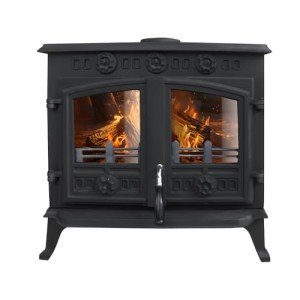What NOT To Do Within The Multi Fuel Wood Burner Industry
The Benefits and Considerations of Multi-Fuel Wood Burners
Intro
As energy costs continue to increase and concerns about ecological effects grow, many house owners are seeking effective and sustainable heating options. Multi-fuel wood burners have acquired appeal over the last few years for their flexibility and performance. These flexible heating solutions allow homeowners to utilize various kinds of fuel, including wood, coal, and other biomass. In this article, we will check out the advantages, functions, and considerations of multi-fuel wood burners, together with some regularly asked concerns and pointers for use.
What is a Multi-Fuel Wood Burner?
A multi-fuel wood burner is a stove or fireplace developed to burn various kinds of fuel, including:
- Seasoned wood logs
- Wood pellets
- Coal
- Coke
- Peat
This flexibility allows users to adjust their heating sources based on availability, expense, and personal choice!
Functions of Multi-Fuel Wood Burners
Multi-fuel wood burners include several features that improve their performance and user experience. These might include:
- Airwash System: Keeps the glass tidy for a clearer view of the flames.
- Heat Exchanger: Improves efficiency by moving more heat to the room.
- Chimney Control: Regulates airflow and smoke output.
- Robust Grate: Allows ash from coal to fall through, making sure much better air circulation.
Benefits of Multi-Fuel Wood Burners
The benefits of setting up a multi-fuel wood burner exceed simply heating. Here are some primary benefits:
1. Adaptability
The ability to burn different kinds of fuel suggests that users can adapt to changing conditions. For Multi Fuel Burning Stoves , if wood ends up being limited during winter season, one can conveniently switch to coal.
2. Cost-Effectiveness
In numerous areas, the cost of wood and coal can considerably vary with the seasons. Multi-fuel burners provide the flexibility to choose the most affordable and most readily offered fuel.
3. Ecological Impact
Utilizing eco-friendly resources, like seasoned wood, can minimize carbon footprints. Multi-fuel wood burners tend to produce lower emissions when utilizing cleaner fuels.
4. Reliability
Having an alternative to switch fuel types indicates that house owners are less most likely to be impacted by lacks. Furthermore, properly maintained units provide a consistent source of heat.
5. Aesthetic Appeal
Many multi-fuel wood burners come with an appealing design that enhances the interior design of a home, supplying not just heat however likewise a cozy atmosphere.
Disadvantages to Consider
While multi-fuel wood burners use a number of benefits, they also have some drawbacks:
- Installation Costs: Initial installation can be more costly compared to easier wood-burning stoves.
- Upkeep: They need regular upkeep and cleaning, particularly if burning coal, to keep the system running effectively.
- Area Requirements: Some models might require more area than traditional wood stoves.
Utilizing a Multi-Fuel Wood Burner Efficiently
Optimizing the performance of a multi-fuel wood burner requires some understanding and practices. Here are suggestions for effective use:
- Choose Quality Fuel: Opt for well-seasoned wood or top quality coal to make sure much better combustion and energy output.
- Appropriate Maintenance: Clean the stove and chimney regularly to avoid buildup of creosote and make sure great air flow.
- Change Airflow: Learn to control the airflow to tweak the heat output according to your requirements.
Table: Comparison of Fuel Types for Multi-Fuel Burners
Fuel Type
Pros
Cons
Best Use
Experienced Wood
Eco-friendly, great heat output
Requires storage, can produce smoke
Main heating source
Wood Pellets
High performance, low emissions
More expensive, needs a pellet stove
Secondary heating source
Coal
High heat output, longer burn times
Pollutants, more environmental restrictions
Backup heating source
Coke
High efficiency, extremely little smoke
Hard to discover, costly
Industrial applications
Peat
Sustainable and renewably sourced
Lower heat output, smells when burning
Specific local choices
Regularly Asked Questions (FAQs)
1. Can all multi-fuel wood burners burn wood and coal at the very same time?
No, multi-fuel wood burners are typically designed to burn one kind of fuel at a time. Nevertheless, some might permit a combination of fuels but inspect the producer's guidelines.
2. How do I preserve my multi-fuel wood burner?
Routine maintenance involves cleaning up the burn chamber, ash pan, chimney, and glass doors. It's recommended to have an expert inspection each year.
3. Are multi-fuel wood burners energy effective?
Yes, multi-fuel wood burners can be energy effective, especially when using skilled wood or premium pellets. Efficiency rankings vary by design, so research before purchasing.
4. Do I require a special chimney for a multi-fuel wood burner?
Most multi-fuel wood burners can utilize standard chimneys, but some may require a chimney that is particularly ranked for the kind of fuel being burned. Consult a professional installer for suggestions.
5. Can I transform a conventional wood burner to a multi-fuel burner?
In a lot of cases, this isn't feasible. Nevertheless, consult with a professional installer to go over options based on particular designs and styles.
Multi-fuel wood burners provide an excellent choice for those wanting to stabilize cost, effectiveness, and ecological effect in their home heating solutions. With the ability to make use of various fuel types, these burners provide flexibility and reliability while enhancing the visual appeal of a home. By thinking about the pros and cons, practicing appropriate maintenance, and using efficient heating suggestions, homeowners can enjoy the advantages of a multi-fuel wood burner for years to come.
